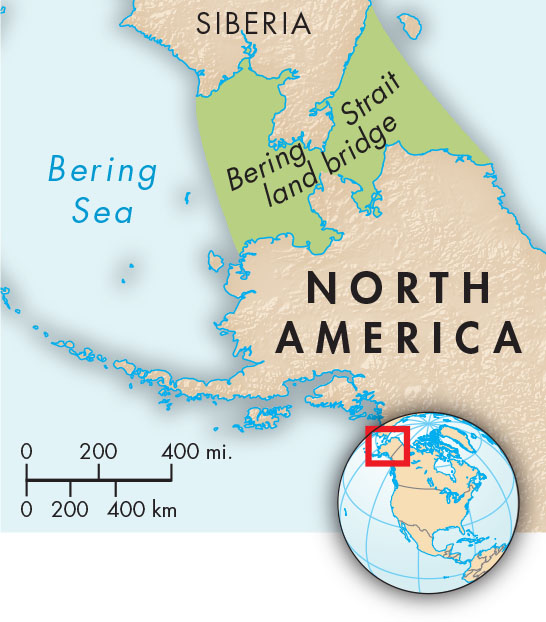A History of World Societies:
Printed Page 7
A History of World Societies Value
Edition: Printed Page 8
Migration and Differentiation
Like Homo erectus had earlier, groups of Homo sapiens moved. By 200,000 years ago they had begun to spread across Africa, and by 120,000 years ago they had begun to migrate out of Africa to Eurasia (see Map 1.1). They most likely walked along the coasts of India and Southeast Asia, and then migrated inland. At the same time, further small evolutionary changes led to our own subspecies of anatomically modern humans, Homo sapiens sapiens (which literally translates as “thinking thinking humans”). Homo sapiens sapiens moved into areas where there were already Homo erectus populations, eventually replacing them, leaving Homo sapiens as the only survivors and the ancestors of all modern humans.
The best-
Cro-
Until very recently Neanderthals were thought to be the last living hominids that were not Homo sapiens, but in 2003 archaeologists on the Indonesian island of Flores discovered bones and tools of three-

Homo erectus migrated great distances, but Homo sapiens sapiens made use of greater intelligence and better toolmaking capabilities to migrate still farther. They used simple rafts to reach Australia by at least 50,000 years ago, and by 35,000 years ago had reached New Guinea. By at least 15,000 years ago, humans had walked across the land bridges then linking Siberia and North America at the Bering Strait and had crossed into the Americas. Because by 14,000 years ago humans were already in southern South America, ten thousand miles from the land bridges, many scholars now think that people came to the Americas much earlier. They think humans came from Asia to the Americas perhaps as early as 20,000 or even 30,000 years ago, walking or using rafts along the coasts. (See Chapter 11 for a longer discussion of this issue.)

With the melting of glaciers sea levels rose, and parts of the world that had been linked by land bridges, including North America and Asia as well as many parts of Southeast Asia, became separated by water. This cut off migratory paths but also spurred innovation. Humans designed and built ever more sophisticated boats and learned how to navigate by studying wind and current patterns, bird flights, and the position of the stars. They sailed to increasingly remote islands, including those in the Pacific, the last parts of the globe to be settled. The western Pacific islands were inhabited by about 2000 B.C.E., Hawaii by about 500 C.E., and New Zealand by about 1000 C.E. (For more on the settlement of the Pacific islands, see “The Settlement of the Pacific Islands” in Chapter 12.)
Once humans had spread out over much of the globe, groups often became isolated from one another, and people mated only with other members of their own group or those who lived nearby, a practice anthropologists call endogamy. Thus, over thousands of generations, although humans remained one species, Homo sapiens sapiens came to develop differences in physical features, including skin and hair color, eye and body shape, and amount of body hair. Language also changed over generations, so that thousands of different languages were eventually spoken. Groups created widely varying cultures and passed them on to their children, further increasing diversity among humans.
Beginning in the eighteenth century, European natural scientists sought to develop a system that would explain human differences at the largest scale. They divided people into very large groups by skin color and other physical characteristics and termed these groups “races,” a word that had originally meant lineage. They first differentiated these races by continent of origin — Americanus, Europaeus, Asiaticus, and Africanus — and then by somewhat different geographic areas. The word Caucasian was first used by the German anatomist and naturalist Johann Friedrich Blumenbach (1752–